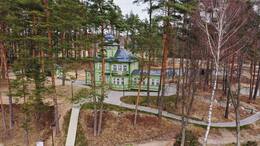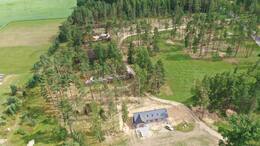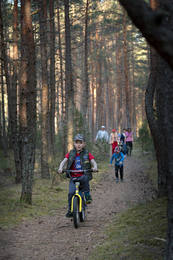Nikolai Reek (1890-1942)
I Wars of Independence, II World War II
Estonian general, politician and one of the most outstanding commanders in the War of Independence. Cross of Liberty 1st Class 2nd Rank, 2nd Class 2nd Rank and 2nd Class 3rd Rank recipient.
Nikolai Reek was born Nikolai Bazykov on 1 February 1890 in Tallinn but grew up in the family of Aleksei Reek in Saaremaa. He graduated from Chuhuiv Military Academy in 1910, aerial observer courses in Kiev in 1916 and the Imperial Nicholas Military Academy in Saint Petersburg in 1917. He was the first Estonian officer to attend the École supérieure de guerre in France from 1923 to 1925.
He was appointed Company Commander of the 90th Onega Regiment at the start of the First World War in 1914 and rose to the position of Chief of Staff of Muhu (Moonsund) Fortification of Peter the Great's Naval Fortress by the end of the war.. Reek left the Imperial Russian Army as Captain of the General Staff.
At the start of War of Independence, Reek was appointed Regional Head of the Defence League in Viru County and Narva and was soon made Commander of the 5th Infantry Regiment, then of the 1st Division, 3rd Division and finally Chief of Staff of the Viru front. In 1918, Reek was promoted to the rank of Lieutenant Colonel of the General Staff of the Estonian Armed Forces and Colonel of the General Staff in 1919. In 1926, he was promoted to the rank of major general and in 1938 the rank of lieutenant general.
From 1925 to 1926 and 1934 to 1939, Reek was Chief of Staff of the Estonian Armed Forces, he served as Minister of Defence from 1927 to 1928 and Minister of War from 1939 to 1940 in Jüri Uluots' cabinet prior to the Soviet occupation. In the early 1930s, he was Commander of the 2nd Division, he also ran the Higher Military Academy and the Estonian National Defence College.
Nikolai Reek was married to Marie Clara Johanson, they had two daughters. Their daughter Larissa passed away in 1921. Their second daughter Tiiu was deported with her mother in June 1941. Both died in Andreyevka in the Chainsky District in Tomsk Oblast. Nikolai Reek was arrested at his home in March 1941 and sent to Usollag concentration camp in Solikamsk in Russia. He was sentenced to death by the NKVD military tribunal and executed on 8 May 1942.
Related objects
Värska Visitor Centre and Northern Camp
The restored Art Nouveau summer home of General Nikolai Reek is situated on the shore of Lake Õrsava in Värska, surrounded by scenic nature.
Värska Visitor Centre opened here in 2020, showcasing the unique heritage of the region. The exhibition provides an overview of the Northern Camp of Petseri established here in the 1920s, the events of the War of Independence and the use of therapeutic mud and mineral water at local resorts.
Northern Camp
The Northern Camp is situated on the shores of Lake Õrsava south of Värska in Võru County.
Officially the Estonian Defence Forces' Northern Camp of Petseri (2nd Division staff headquarters), it was established in the mid-1920s as a summer training centre for cavalry and artillery. The complex comprised barracks, stables, officers' housing, a canteen and an impressive mess. The camp also had sports grounds and courts and swimming facilities by the lake. There were separate swimming areas for officers, soldiers and horses. In the middle of the camp were muster and parade grounds. The artillery camp was situated on the other side of the lake, including a lumber mill.
Most of the buildings have since been destroyed, but the barracks and some of the living quarters have survived. The site can be viewed from the outside.
Upon request, Värska Farm Museum can provide a thematic programme focussing on the Northern Camp.
Laskevälja bike trail
This bike trail runs through Võru County, over the wooded kames, through the bogs, around lakes and past the sandy expanses of Mustoja.
The 43-km trail recalls local military history by passing through a firing range used by the Estonian Defence Forces during the 1920s and 1930s. The 17-km section from Värska to the Southern Camp is fairly even, but the road back is longer (26 km) and more rugged. The starting point is at the State Forest Management Centre’s Värska campfire site, where you will find a detailed map of the trail.
Related stories
The beginning, course and conclusion of the Battle of Cēsis
The victory in the Battle of Cēsis was destined to become a turning point in the Latvian and Estonian struggle for the independence of their country. This victory put an end to the plans of the Andrievs Niedra government and the German general Rüdiger von der Goltz to conquer the Baltics. Instead, the Latvian Provisional Government of Kārlis Ulmanis resumed its activities in Liepāja.









